Pastel Ball Pythons are vibrantly colored snakes perfect for beginners and experienced keepers.
They are a color morph of the Ball Python – a species known for their calm, friendly temperament and vibrant colors.
Their vibrant color and pale eyes make them beautiful to look at.
The first recorded captive clutch was in 1997 and since then Pastels have become a popular morph.
Has the Pastel’s beautiful colors and delightful temperament caught your attention? Keep reading to learn the best way to care for one of these beautiful constrictors…
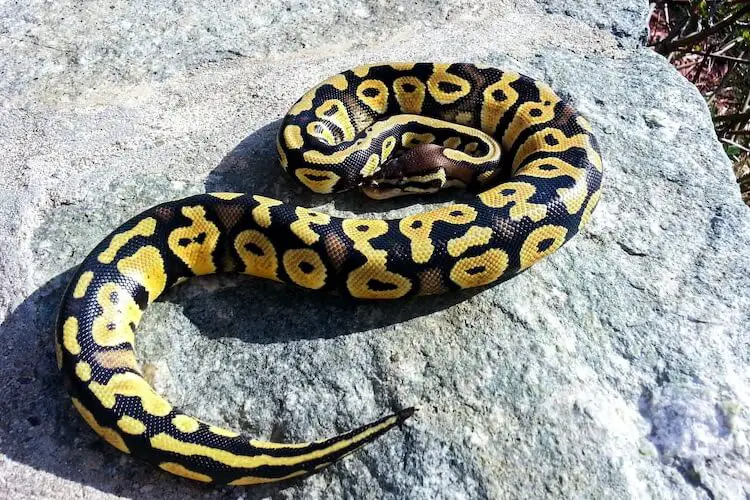
What Is A Pastel Ball Python Morph?
Pastel Ball Pythons are genetic variants (i.e. morphs) of the wild type Ball Python. This morph has codominant genes that produce a vibrantly colored snake.
They are more brightly colored than normal ball pythons and are easily identified by their pale green eyes. Some Pastels have white lips. However this is very rare so they are more expensive than the $50 price tag of common Pastel Ball Pythons.
Since the early 1980s Ball Pythons have been exported to the United States as pets.
Thousands are exported from Africa yearly and despite this the wild populations are holding strong.
Pastel Ball Pythons are medium sized snakes that are native to western Africa. This region of Africa is covered with grasslands, wooded forests and savannas.
They are a nocturnal snake and so will spend most of their days hiding in found burrows or stump holes underground. At night they emerge to actively hunt for rodents or birds. Their basic habits make them capable of seamlessly adapting to captivity.
In captivity they are docile and can live for well over 25 years.
What We Like About Pastel Ball Pythons
Pros
- Vibrant coloration.
- Calm docile temperament.
- Medium sized.
Cons
- Color contrast can fade with age.
- Nocturnal.
- Prone to stress-induced anorexia.
Pastel Snake Appearance
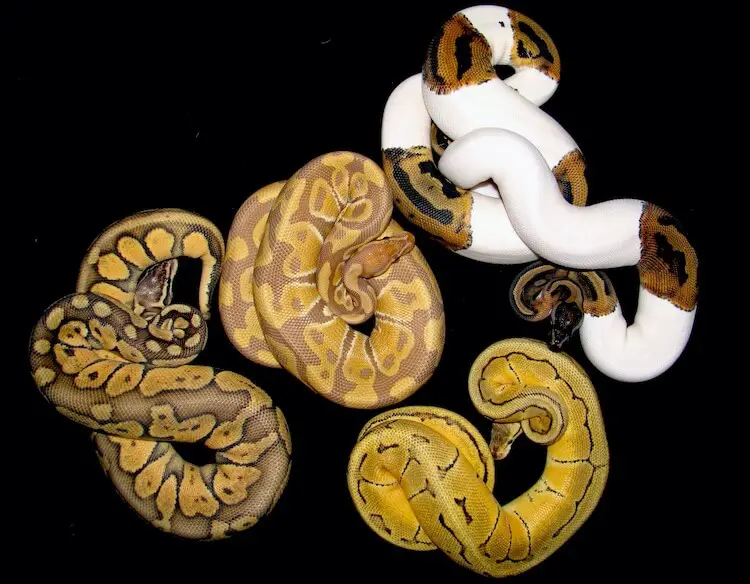
Pastel ball python morphs are bred from codominant wild genes.
They are a basic morph used in a variety of selective breeding programs. When added to a breeding pair Pastels are known to increase the vibrancy of the offspring’s patterns. This is due to their codominant genetic trait interaction.
Color Variations and Markings
Normal ball pythons have rich dark brown blotches over a black base color. Some also have some spinal spots, but their pattern is concentrated along the sides. They also have dark heads and eyes.
The appeal of the Pastel python is their vibrancy.
Pastel Ball Pythons have an identical pattern to the normal species but a much more noticeable color contrast.
They have more blushing and fading towards their white bellies and also have vibrant orange-yellow blotches instead of brown. Some even have pale green eyes and a white lip!
Most babies are born with extremely light faded heads that darken with age.
Aside from their coloration they are identical to normal ball pythons.
Pastel Ball Python Size
Males tend to reach two to three feet in length. Females are larger in size and normally range from three to five feet. Males are full grown after three years. Females’ growth rates are much faster than males so they reach their adult size within four years.
Males tend to have longer tails than females but both sexes have stout bodies with short stubby tails.
Hatchlings are born 10 to 17 inches long regardless of their sex.
Pastel Ball Python Care Sheet
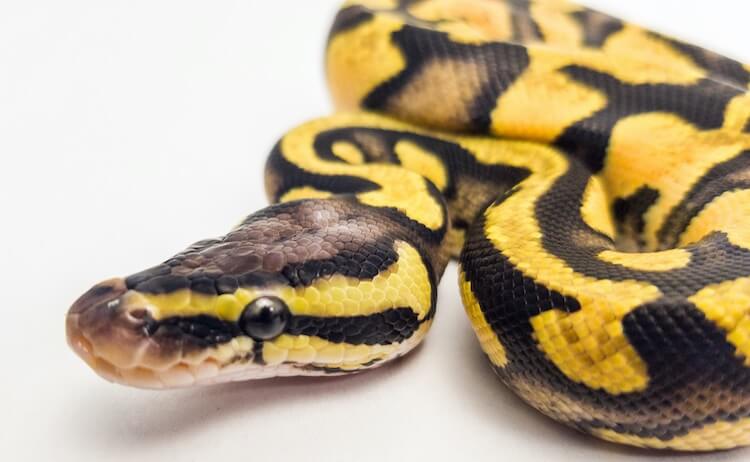
The Pastel snake has the same care requirements as any other Ball Python.
Pastel Ball Python Diet
Pastel Ball Pythons are carnivorous snakes. During the night they leave their burrows in search of birds and rodents. Research shows that:
- Males tend to climb more and eat birds 70% of the time.
- Females stay closer to the ground and eat rodents 60% of the time.
They are a constrictor species so kill their prey by coiling round it.
In captivity their prey should be as wide as the thickest part of their body. It is possible they can eat larger prey but you should not put too much strain on their body.
Some Pastel Ball Pythons may favor mice over rats so you should offer both during their juvenile phase to avoid picky eaters.
General feeding guidelines are:
| Age | Diet |
|---|---|
| Hatchling | One fuzzy mice or rat pup every five days. |
| Juvenile | Mostly rats with the occasional mouse every 7 days. |
| Adult | One rat every 10 days. |
Ideally you should feed frozen-thawed prey to avoid injury.
To provide mental enrichment try to wiggle the feeding tongs after your snake strikes. This will stimulate their natural constricting behaviors.
The occasional chick can be offered in captivity for enrichment.
However, be careful feeding chicks to Pastel Ball Pythons as they are known to be picky eaters and may reject rats in favor of low-calcium chicks.
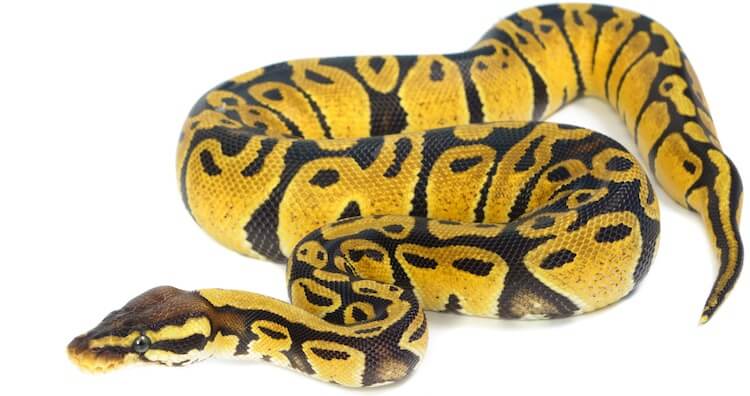
Ball Python Lifespan and Health
With correct husbandry and a good environment these snakes can live for over 30 years in captivity.
Snakes are capable of hiding sickness until it is severe. Careful observation of their behavior, fecal habits and body condition is the best way to catch a problem early.
Many of the health issues below are related to poor husbandry. If you maintain consistent, species-appropriate care, you will minimize the chance of your snake becoming sick.
Common captive snake diseases include mouth or scale rot, cancer and prolapse. Due to a Pastel Ball Python’s care and behavior they are prone to some specific health issues:
- Anorexia
- Poor sheds
- Impaction
- Obesity
Anorexia is common with this species as they are easily stressed by environmental changes and may not feed for months at a time.
This snake requires moderate to high humidity and will have poor sheds if humidity is inconsistent. Low humidity can also cause respiratory illnesses.
As constrictors Pastels are highly likely to drag their prey across substrate and suffer from impaction. To avoid this feed dry rodents in an empty tub.
Pastel Ball Pythons are sedentary and avoid exercise for most of the day. Body condition and weight should be carefully monitored to ensure they do not become obese.
Signs They Are Healthy
- Regular eating.
- Full sheds.
- Consistent body condition.
Sickness Symptoms
- Refusing prey.
- Stuck shed or eye caps.
- Wheezing or open-mouth breathing.
Pastel Ball Python Enclosure

Ball Pythons are found throughout the savanna and grassland ecosystems of sub-Saharan Africa.
They spend most of their days hiding in burrows to avoid the heat. Like all Ball Pythons this species is notoriously shy. Because of this their enclosure should have lots of fake foliage, sticks, and rocks to provide coverage.
What Size Tank Should I Get For A Pastel Ball Python?
Their enclosure size changes based on age:
- Hatchlings under one year should have a 10-gallon tank.
- Juveniles larger than 1.5 foot should be homed in a 20-gallon tank.
- Adults should live in a 40-gallon enclosure.
They are skilled escape artists so always secure a lid to their enclosure!
Pastel Ball Pythons are happy to be housed in any type of enclosure. Ventilated PVC and plastic enclosures are best as they retain humidity better and provide more security for your snake. The clear sides of glass tanks can stress your snake.
You should monitor humidity closely in glass tanks to ensure it doesn’t drop too low:
- Tank Type: ventilated PVC.
- Tank Size: 40-gallons.
- Lighting: basking light.
- Substrate: cypress mulch or coconut fiber.
A basking lamp is required during the day for roughly 12 hours to simulate a day-night routine. It should be placed over a rock or large branch. The basking lamp should maintain a temperature of 88 – 92°F at the basking surface.
Ideally the cool side of their tank should stay between 76 – 80°F with an ambient temperature of 82 – 83°F.
UVB bulbs are not required for Pastel Ball Pythons.
At night you should use a ceramic heat emitter to keep the temperature above 70°F. This will reduce the chance of your pet becoming ill or stressed. Avoid using heat pads as they do not penetrate substrate well and can cause injury.
Cypress mulch, coconut fiber, or fertilizer-free topsoil are the best substrate options as they are cheap, safe and maintain humidity well. Dry or dusty substrates (e.g. aspen, cedar, and pine shavings) can cause respiratory issues and do not hold moisture well.
Finally provide your snake with a large water dish.
Pythons will soak themselves and drink directly from the bowl. You should change their water at least every two days as they frequently soak and dirty their water.
Cleaning & Misting
Ball Pythons thrive in humid environments with plenty of décor. Unfortunately bacteria and mold thrive in these conditions too.
Every four weeks you should totally sanitize the enclosure.
Substrate should be changed and all décor should be scrubbed with soap and water:
- Bake any wooden décor for 15 minutes at 350°F.
- Plastic décor or plants can be dipped in a 10% bleach solution and thoroughly rinsed with water.
You should spot-clean your snake’s enclosure daily to remove feces.
Typical Behavior
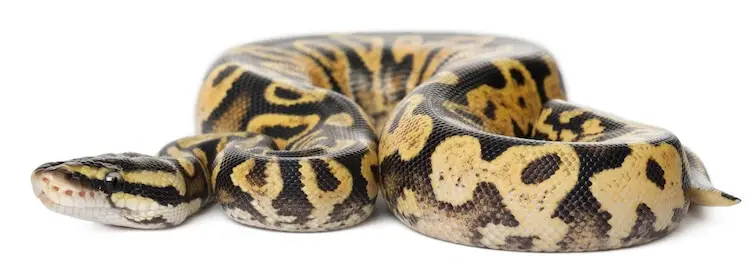
Pastel Ball Pythons are nocturnal so hide during the day in rodent burrows or stump holes. This helps them to avoid heat and predation.
At night they will emerge to hunt prey.
They use heat sensing pits in their faces, UV detecting vision and strong scent recognition to hunt their prey in the dark.
Because of their sedentary lifestyle and nocturnal activity they have defensive behaviors. When threatened they will ball up and hide their heads.
In captivity they display the same behaviors.
They hide during the day, emerge at night, and ball up when they are spooked.
In the wild winters are too cold for them. This means they remain underground for four months without eating and come back out to warmth in spring.
They will not brumate in captivity unless their enclosure experiences seasonal temperature changes.
Do Ball Pythons Like Being Handled?
Pastel Ball Pythons are loved for their calm, docile attitude and willingness to be handled.
They are one of the best pet snakes for beginners as they move slowly, have few defensive behaviors and become comfortable enough to stop balling up over time.
Ideally you should condition them to handling using the following timetable:
- Week 1: Do not handle. Allow them to adjust to their new environment.
- Week 2: Handle 10 – 15 minutes per day to avoid stressing.
- Week 3: Handle daily for 15 – 30 minutes and change the time of day.
- Week 4: Handle daily for 15 – 30 minutes and change the method of handling.
Scent is a great way to build trust with your snake.
To do this place a worn shirt or pillow case in their enclosure. This will let your snake get used to your smell and become more comfortable being handled.
If your snake appears stressed or doesn’t release its ball after 5 minutes then put it back in its enclosure.
Baby Pastel Ball Python
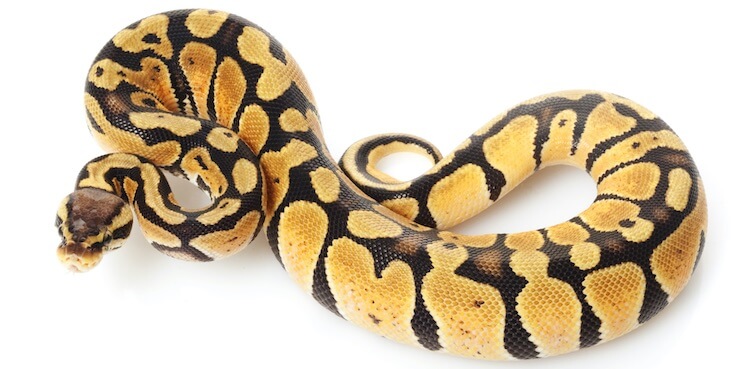
Ball Pythons hatch from eggs at 10 – 15 inches long and are vibrantly colored with faded heads.
Over time their heads darken significantly. Sometimes their bodies may darken with age too.
Babies are normally born between September to November.
After hatching the babies leave and are able to defend and feed themselves.
Buyer’s Guide
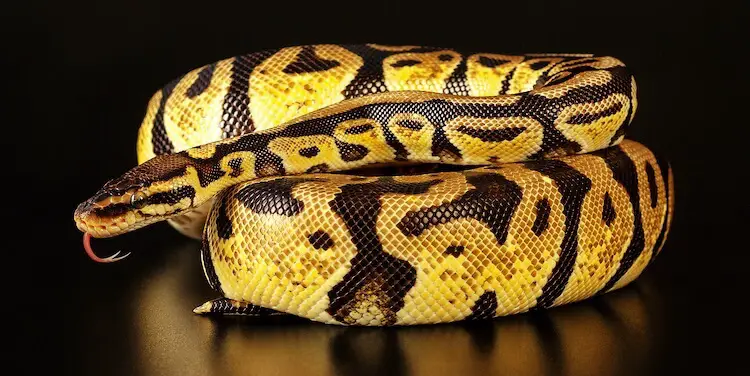
Pastel Ball Pythons are common morphs.
Many breeders produce Pastels or designer Pastels so it is important you find one with experience and a good reputation. A reputable breeder will be knowledgeable about the species and be able to answer most husbandry questions.
Once you have chosen a breeder, you must then choose the snake.
Many people tend to look for aesthetics when choosing the snake but its behavior is more important.
Look for a snake that is alert. For a Pastel Ball Python this means that they will either be trying to escape their enclosure or tightly balled up.
How Much Is A Pastel Ball Python?
Prices for Pastels range from $30 – $75.
Most average $50 but their color contrast can drive prices up or down.
Less vibrant Pastels fall on the cheaper end of the spectrum and vividly yellow snakes are $75.
| Pastel Ball Python Facts | |
|---|---|
| Common Name | Pastel Snake |
| Scientific Name | Python Regius |
| Price | $30 – $75 |
| Size | 2 – 5 feet long |
| Lifespan | 25 to 30 years |
| Diet | Mice, rats |
| Tank Size | 40-gallon tank |
| Humidity & Temperature | Basking: 88 – 92°F Humidity: 50 – 60% |
| Popular Alternatives | Other morphs, Corn Snakes and Brazilian Rainbow Boas |
Summary
Pastel Ball Pythons are loved for their calm demeanor, tolerance to handling and good temperament.
They are hardy snakes that can live for over 25 years provided they have proper husbandry. Ball Pythons explore their enclosures at night so need a 40-gallon tank with plenty of hides and décor.
If you aren’t sure about their vibrant orange-yellow blotches and pale green eyes, then check out the hundreds of Ball Python morphs.
Let us know what you think about this morph in the comments below.

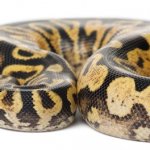
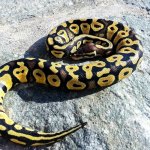
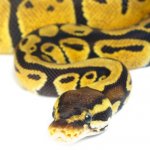
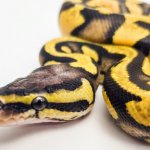
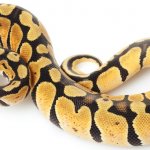
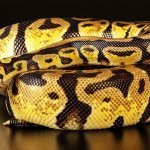
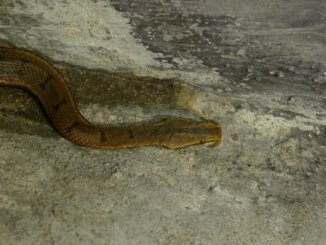
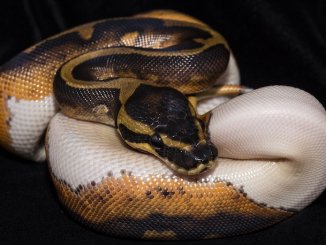
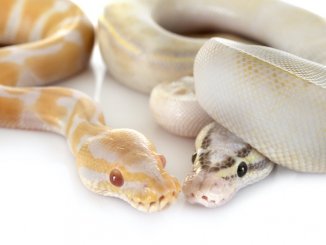

I have loved ball pythons since I was a little kid. And the pastels are my favorite. I have a question that I hope you can help me with. Do you know of any reputable ball python dealers in the baltimore maryland area that sell pastels both males and females at a reasonable price? The size and age are not important because I have bought both young and older morphs over the years and have never had a problem with their temperament. Thank you and I hope to hear from someone that can possibly help me with my search.
I need a care sheet for my pastel ball python and I need a light and how I know if he is hurrying
This post is a care sheet for the pastel ball python. Scroll down and you will get all the info you need on lighting, feeding and so on! Feel free to ask us more specific questions if you do not find what you need.